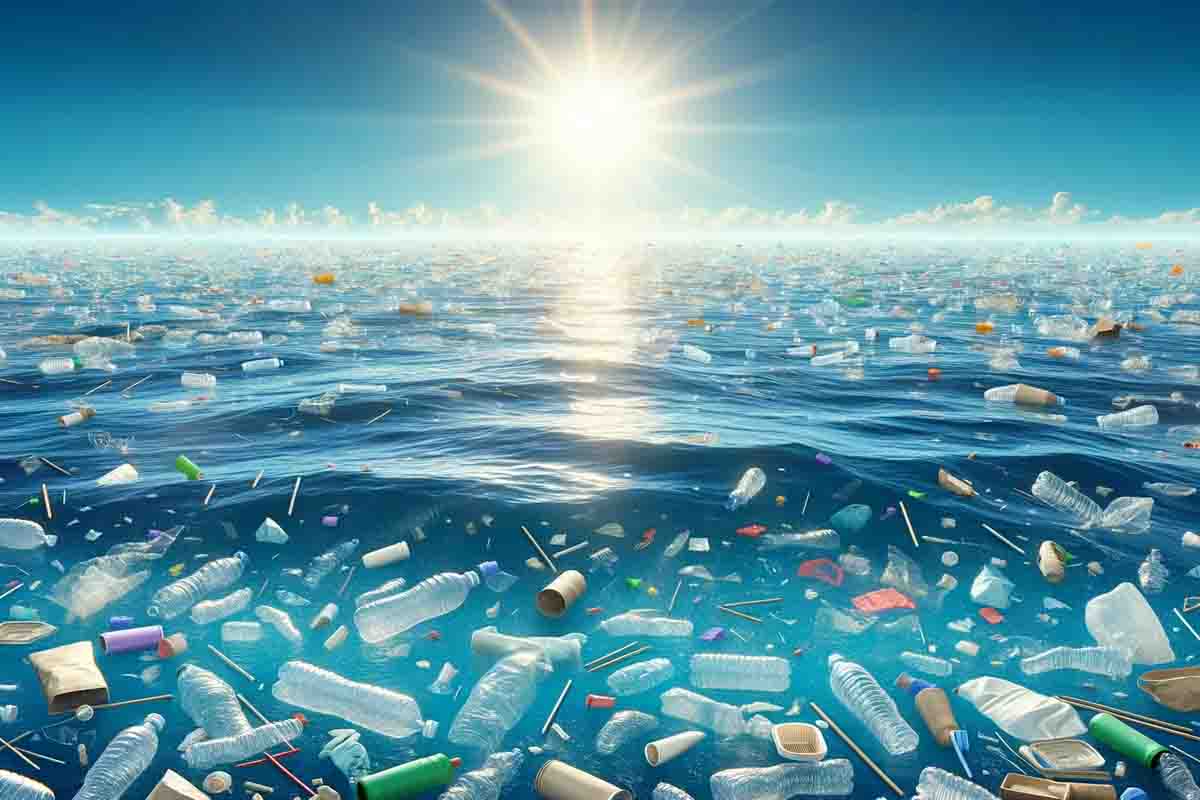A new financial initiative aims to tackle ocean plastic pollution, with a €3 billion (approximately $3.3 billion) commitment from six global banks. The strategy focuses on pollution prevention, sustainable alternatives, and circular economy solutions.

The amount of plastic waste flooding our oceans could triple by 2040, growing from the current 11 million tons to an estimated 23 to 37 million tons per year. Faced with this alarming forecast, six of the world’s major development banks have joined forces in a landmark financial initiative.
A 3-billion-euro alliance to tackle the plastic crisis
The Clean Oceans Initiative 2.0, unveiled at the United Nations Ocean Conference in Nice, represents an evolution of an ambitious project that began in 2018. Leading the charge are Cassa Depositi e Prestiti (CDP), the Agence Française de Développement (AFD), the German Kreditanstalt für Wiederaufbau (KfW), the European Investment Bank (EIB), the European Bank for Reconstruction and Development (EBRD), and the newly added Asian Development Bank (ADB). Together, they aim to mobilize €3 billion (approximately $3.3 billion) from 2026 to 2030.
The initiative’s strategy revolves around three key pillars: preventing pollution, developing circular economy solutions, and creating sustainable alternatives to traditional plastics. This marks a shift from the previous focus, which was primarily on managing the waste that has already been produced.
Targeted investments in asia, africa, and latin america
The geographic focus of the initiative reflects the global distribution of the problem. Asia, Africa, and Latin America—regions where waste management and water treatment in major river basins are critical challenges—will be prioritized. The involvement of the Asian Development Bank (ADB) is particularly significant, given that a substantial portion of ocean-bound plastic originates from Asia.
Most projects will focus on coastal areas, where rapid urbanization and high population pressure make the need for effective waste collection and treatment systems even more urgent. Indeed, most of the plastic that ends up in the oceans originates from poor waste management on land, often transported by rivers due to inadequate collection systems.
Phase one results: €4 billion already invested
The results of the first phase of the initiative, which concluded seven months ahead of schedule in May 2025, testify to the effectiveness of this multilateral approach. The €4 billion (about $4.4 billion) in long-term financing funded real-world projects, such as improved wastewater treatment in Sri Lanka, China, Egypt, and South Africa, solid waste management in Togo and Senegal, and flood protection interventions in Benin, Morocco, and Ecuador.
Microplastics: the invisible threat
Beyond visible plastic waste, the Clean Oceans Initiative 2.0 aims to address a more insidious threat: microplastics. Every year, approximately 1.5 million tons (1.4 million metric tonnes) of microplastics enter the oceans, making up over 10% of total marine plastic pollution. These tiny particles, often invisible to the naked eye, enter the marine food chain with consequences that are still being studied.
Scientifically measuring the impact
One of the most notable features of the second phase will be the introduction of scientifically reliable indicators to measure the impact of the interventions. This approach will allow for precise quantification of the results achieved in preventing plastic pollution, providing a solid foundation for replicating the most effective solutions globally.
Oceans are not just ecosystems to be protected; they are vital resources for humanity. They provide food and income to billions of people, regulate the global climate, and absorb approximately 30% of carbon dioxide emissions, helping mitigate climate change.
